The Complete Guide to Balancing SEO and ad revenue
Get a PDF copy of the guide using the form below, or scroll down to read the entire guide right on this page.
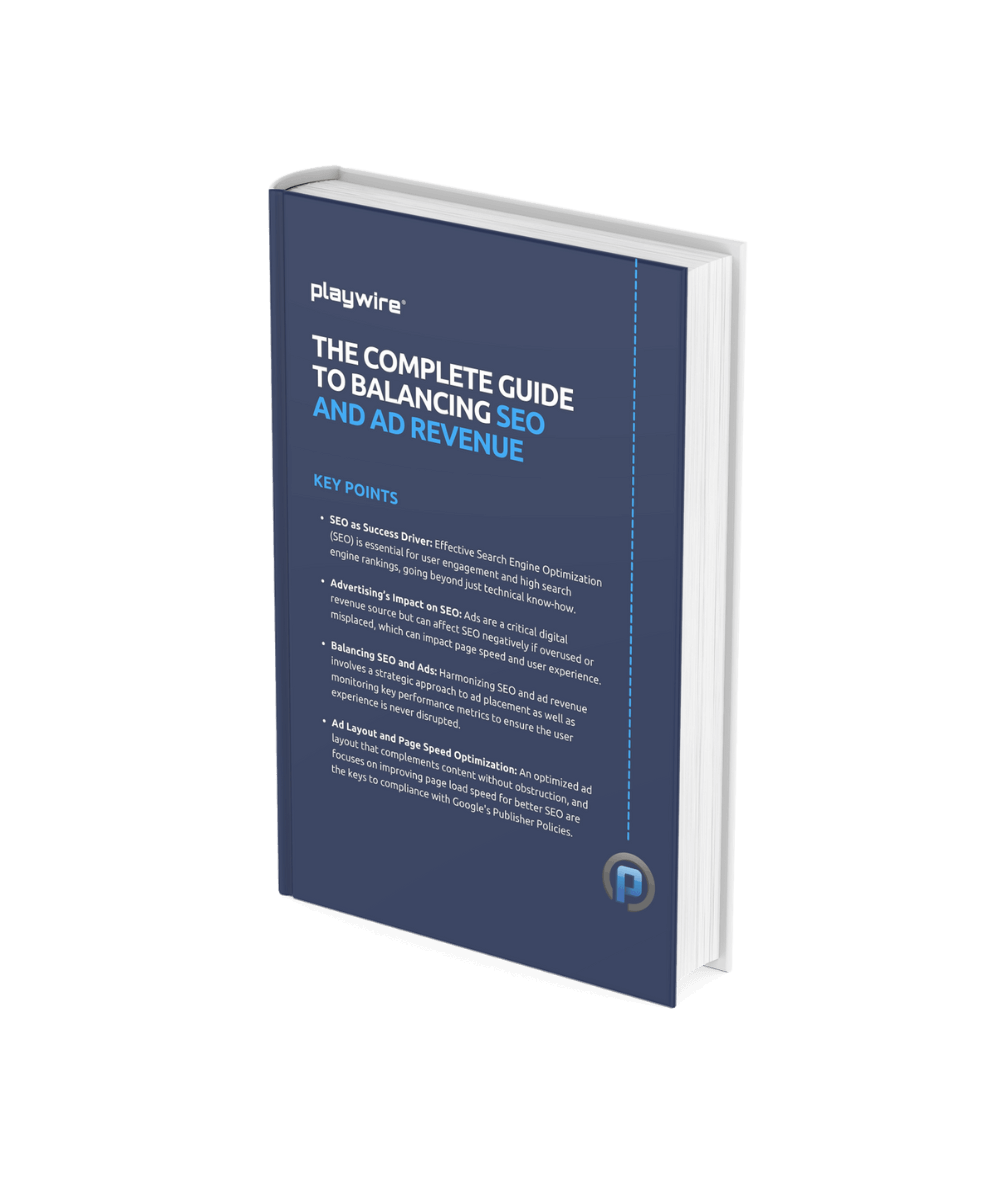
Don't Have Time To Read the Entire Guide Now?
We'll email you a downloadable PDF version of the guide and you can read later.
All of our content is generated by subject matter experts with years of ad tech experience and structured by writers and educators for ease of use and digestibility. Learn more about our rigorous interview, content production and review process here.
Built with the expertise of:

Introduction
- SEO as Success Driver: Effective Search Engine Optimization (SEO) is essential for user engagement and high search engine rankings, going beyond just technical know-how.
- Advertising’s Impact on SEO: Ads are a critical digital revenue source but can affect SEO negatively if overused or misplaced, which can impact page speed and user experience.
- Balancing SEO and Ads: Harmonizing SEO and ad revenue involves a strategic approach to ad placement as well as monitoring key performance metrics to ensure the user experience is never disrupted.
- Ad Layout and Page Speed Optimization: An optimized ad layout that complements content without obstruction, and focuses on improving page load speed for better SEO are the keys to compliance with Google's Publisher Policies.
No matter your niche, vertical, or chosen platform, content creators and publishers of all kinds need to navigate the delicate balance between two pivotal forces: SEO and ad revenue.
Think of it like a balancing act.
Too much weight in one area, and the scales can tip unfavorably. Striking the perfect balance isn’t just beneficial, it’s essential for thriving in a competitive online advertising landscape. From the basics of SEO and ads to best practices to keep your content quality, engaging, and profitable, we’re here to give you the definitive scoop.
Let’s dive into the interplay between Search Engine Optimization and ad revenue, and learn why mastering this combo is a game-changer.
table of
contents
The Essence of SEO in Online Success
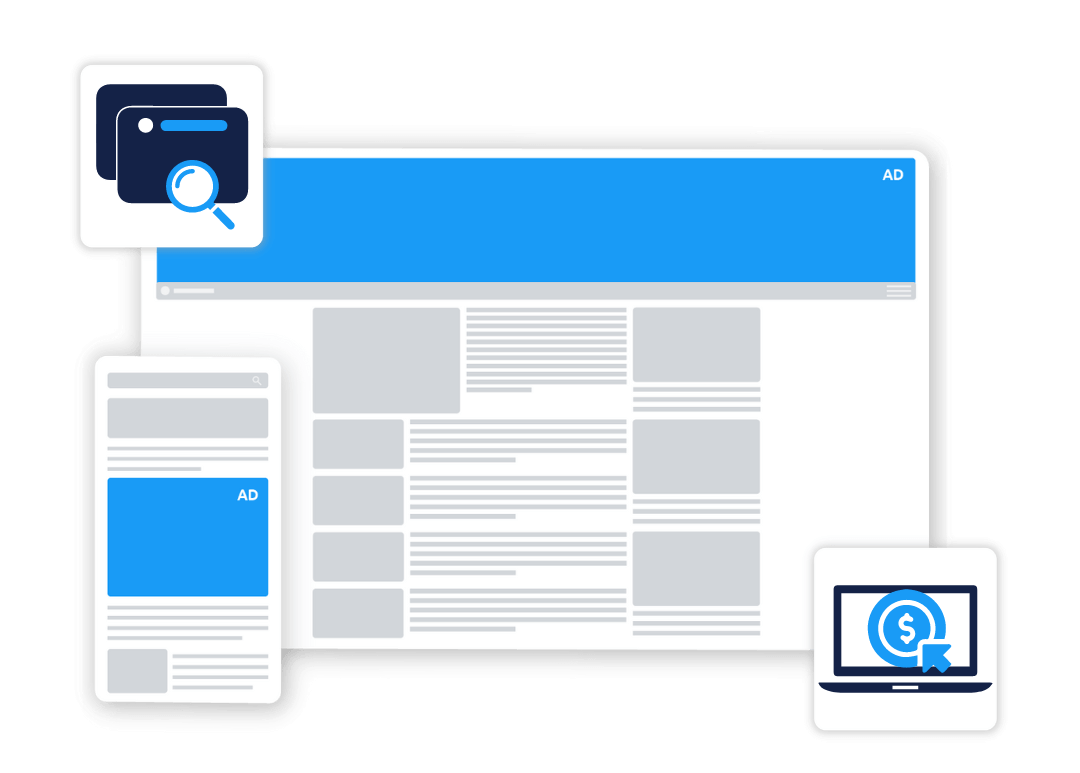
SEO is your beacon in the digital world.

[Gif courtesy of Pinterest.com]
It guides organic traffic to your doorstep. But, getting it right is more than just having a grasp of the technical know-how — it’s about crafting content that resonates with your audience but also aligns with a search engine’s algorithmic demands.
There’s just no way to find success in digital advertising without it. In fact, for virtually every website, the top traffic source is organic search.
A strategic approach to SEO is not just good practice; it’s a long-term investment.
It helps publishers and creators develop a solid foundation for user engagement and growth while ensuring content is easily discoverable and ranks well on search engines.
Simply put, effective SEO is the cornerstone of your online presence. It influences everything you do, from visibility to long-term user engagement.
How Ads Influence SEO
What do ads have to do with SEO?
While ads are a vital revenue generator, they have an impact on SEO — and there's just no way around that. Your chosen ad strategy and how closely you monitor it will determine if the impact is positive or negative.
Excessive or poorly placed ads can slow down a website, which affects page load speed. This is a big no-no in the SEO world. Why? Because page load speed plays a huge role in your site's search engine ranking.
While SEO can seem like a foreign language at times, the goal is pretty simple: get users the content they need with a great experience. When a web page takes forever to load, well, it can be annoying. It’s a great way to send users right back to the search engine results page (SERP), looking for the next best option.
Another challenge is something called Cumulative Layout Shift (CLS). This is when ads disrupt the page's structure as it loads.
Let’s say you’re hunting for the perfect sourdough recipe online. You’ve found a great one, with great reviews, no less. When you scroll down to the actual recipe, the text is nowhere to be found. Once it loads, you start to read, and bam! An ad pops up right where you were scanning.
That’s CLS in action, and it’s very annoying for users.
It should come as no surprise that this adversely affects crucial engagement metrics like time spent on the page and bounce rates. These key indicators are what search engines like Google use to evaluate the content quality and relevance of your site.
Push ads with too heavy a hand, and you’re putting your search ranking at risk, and those top spots are precious. The top organic search result receives an average of 19x more clicks than the top paid search result.
Finding the Balance Between SEO and Ad Revenue
Achieving the perfect harmony between SEO and ad revenue is a craft that requires both a skilled hand and a creative mind. The goal? To marry SEO needs with monetization efforts without compromising the user experience. Here are a few tips to help you tread this digital advertising tightrope:
- Build a Solid SEO Strategy First: Prioritize SEO to build a solid traffic foundation, then gradually introduce ads in a way that doesn't impact the user experience too aggressively.
- User-Friendly, Value-Added Monetization: Always ensure that ads add value, not just visually but contextually. Make them feel like a natural part of the user journey.
- Engagement Metrics to Watch: Keep an eye on metrics like session duration, bounce rates, click-through rates, and viewability. A dip might mean it’s time to tweak your website SEO strategy.
Personalizing Ad Layouts
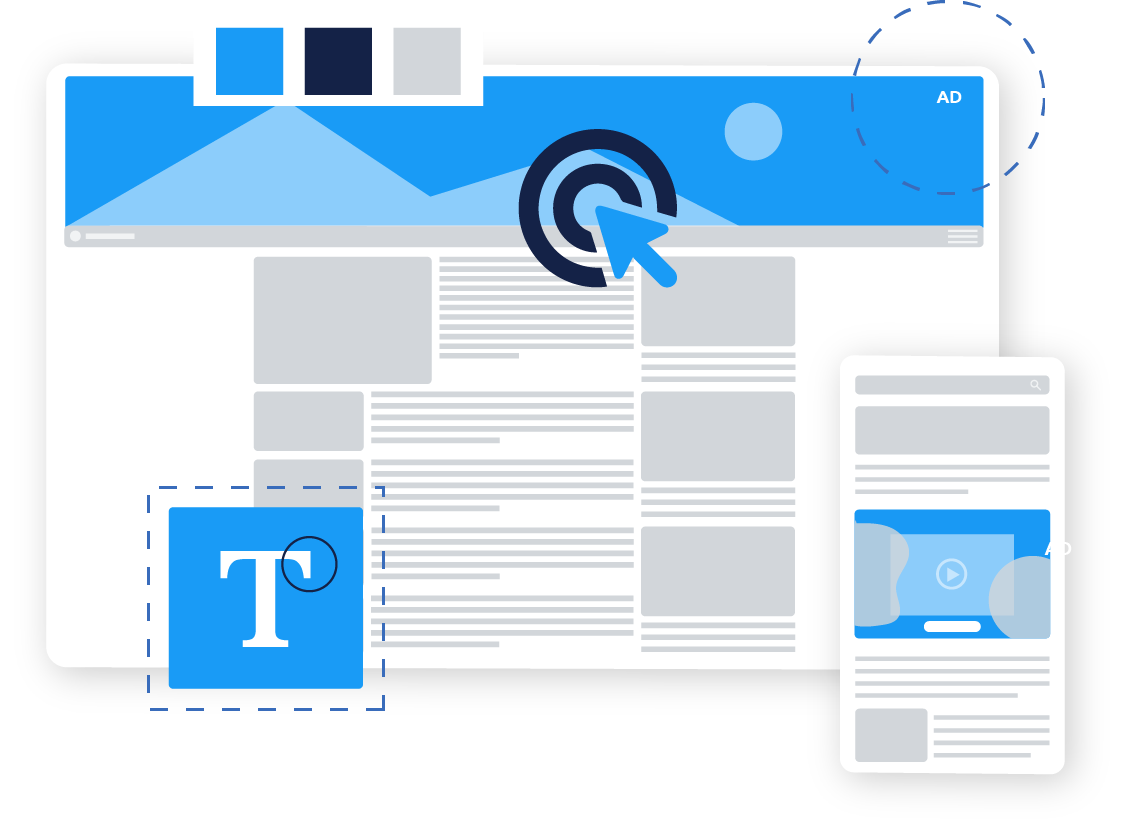
Each page on your site has its own story and its own audience. To get this delicate balance of ads and SEO right, you need to tailor your strategies to match your content.
First, think about page-specific customizations.
Different pages attract different users as well as behaviors. How a user interacts with your blog might be much different than how they interact with a web page that has embedded video content.
Customize ad placements, layouts, and use different ad formats strategically. Don’t just copy and paste the same strategy for each page. Each one has its own unique nature and flow, so experiment with different approaches until you lock in the right one.
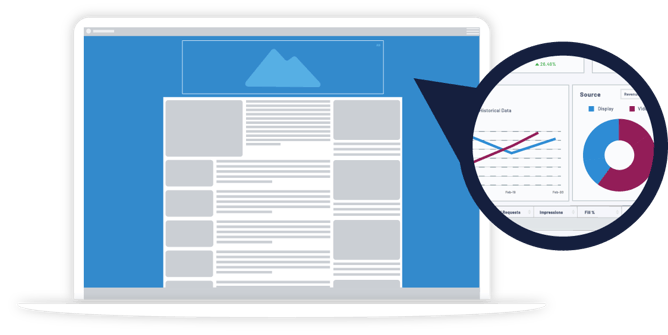
Ad layouts should complement the page. They shouldn’t be eyesores that pull away from your content; they should act as a companion that supports what you’ve got on the screen.
Again, metrics are your friend here.
Metrics allow you to see what users are actually doing rather than guessing. Regularly review how different pages perform with various ad layouts and adjust strategies based on real data to optimize user experience and revenue.
Best Practices for Ad Density and Clutter
Ad density can make or break the user experience. On top of all the tactics we’ve outlined above, be sure to implement these best practices to limit the risk of ad clutter:
- Understand what ad density means. It’s all about the proportion of ads to content. As we’ve learned, too many ads can overwhelm users. Too few can impact your revenue-earning potential.
- Mobile and desktop are different, yet equally important, beasts. For mobile, stick to the 30% rule where ads don't take up more than 30% of the vertical screen space. Desktops can handle a bit more but don’t get greedy.
- Strike a healthy balance between direct advertising deals and programmatic ads. Too much ad clutter can turn off premium advertisers who might otherwise be interested in your ad inventory, and reduce the quality within your programmatic ad space.
Put these guidelines in place, and your ad placements won’t just be revenue generators but also a positive contribution to the overall user experience. But always remember that the goal is to create a seamless and engaging user experience where ads play a supporting role, not the lead.
Ad Layout Optimization Techniques
-2-1-1.png)
So, what does it take to craft an ad layout that perfectly balances SEO needs with ad revenue optimization? It all starts with strategic ad placements.
Position ads to avoid obstructing content or navigational elements. This reduces accidental clicks and, obviously, enhances the overall user experience. Here’s an example: place ads slightly below the fold to improve viewability while being less intrusive.
.gif?width=550&height=326&name=Desktop-Bottom-Rail-In-Article-White-BG%20(1).gif)
Another key tip is careful ad unit selection and sizing.
Always opt for ad formats and sizes that fit naturally with your content and don’t draw away too much attention. Standard Interactive Advertising Bureau (IAB) sizes like 728x90, 300x250, and 160x600 are universally compatible.
However, you should also consider integrating high-impact ad units, such as rewarded video ads, for increased CPMs and added visibility without overcrowding.
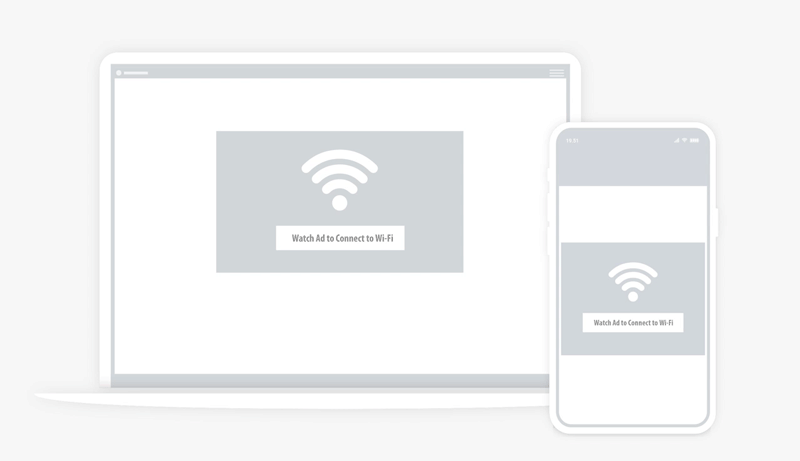
There are also unique ad units like sticky ads that follow the user as they scroll. Sticky ad units like bottom rails, side rails, and sidebars that stick as they hit the top of the viewport are your friend. These ad units increase ad viewability, result in higher yields, help prevent anti-banner blindness, and are highly customizable.

You can also tailor your ad placement to the specific content.
To do this, you need to first analyze user behavior on different types of content. For example, how do users engage with articles vs. videos? Once you have this information, you can adjust ads accordingly. Videos might benefit from in-stream units, while those articles might be better suited for inline or native ads.
Tips for Enhancing Page Load Speed
Remember that page load speed problem? It’s a big part of ranking well with the SEO gods. Here are a few things to optimize:
- Core Web Vitals: Focus on Google’s Core Web Vitals like First Content Paint (FCP) and Largest Contentful Paint (LCP). These metrics can impact user experience and SEO efforts.
- Ad-Related Optimizations: Try to implement strategies like deferred ad loading, which waits until the main content is all loaded up before displaying ads. This can prevent those nasty shifts we touched on earlier while speeding up initial load times.
- Image and Script Management: Optimize images by resizing and using next-gen formats like WebP. Minimize JavaScript and CSS to reduce load times. For example, asynchronously loading non-critical JavaScript can prevent render-blocking.
Adhering to Google Publisher Policies
At the end of the day, your goal is not only to please your users but also Google. Understanding and complying with Google’s Publisher Policies is vital for SEO success. While there are other search engines out there, Google dominates the playing field.
By market share, Google confidently handles around 84% of desktop traffic and 95% of mobile. It’s not really even a competition.
So, how can you keep Google happy? Here’s a quick breakdown of what you need to know.
At the very least, you want to familiarize yourself with key policies like content guidelines. These are the basics: don’t promote illegal or harmful content. You should also explore behavior policies around honest ad interactions and privacy-related policies — especially in a digital world that is becoming more and more sensitive to data privacy handling.
It’s also important to note that these policies don’t develop in a vacuum. When global events take place, you should keep a keen eye on possible changes, which can include restrictions on monetizing content related to sensitive topics or geopolitical crises.
Lastly, you want to regularly audit your content and placement against these ever-changing policies and algorithm updates. Non-compliance can quickly lead to penalties like reduced ad revenue or account suspension. Tools like Google Search Console can be invaluable for monitoring and addressing these issues.
Changes in the Algorithm
Publisher policies are one thing you need to keep an eye on. With the other eye, you need to stay up-to-date on the black box that is Google’s search algorithm.
Now, we could go on and on about these changes, and many SEO professionals do. Essentially, every few months, Google sends out an update that rocks the SEO world. Rankings often tank, and pages that were otherwise dead get sent to the top of the SERP — it can get ugly, and confusing.
But, within these shifts is a pretty simple goal. And to understand that goal, you need to understand the goal of Google search.
Simply put, it’s about getting users the information they need.
While you should always be on the lookout for changes and algorithm updates, at the end of the day, your main goal should always be to craft genuine, helpful, and engaging content. That’s what Google wants, and it’s the very best way to stay out of the crossfire of any and all Google algorithm updates.
Look, changes happen, and volatility is constant. If you're crafting quality content that’s keeping your audience happy, you’re in a good place, regardless of what Google shakes up.
Balancing Factors for Maximized Revenue
That was a lot of info. But mastering ad revenue and SEO isn’t a cakewalk. While great content can get you far, monetizing strategically and effectively is the way to maximize your revenue. Let’s explore some key revenue factors:
- Optimized Web Layout: Your website layout is crucial. It sets the stage where the user experience, SEO, and ads can play out. Carefully plan your layout to ensure ads are noticeable without being intrusive. Integrating ads with content flow, such as visualized below, can enhance viewability while keeping your users happy.
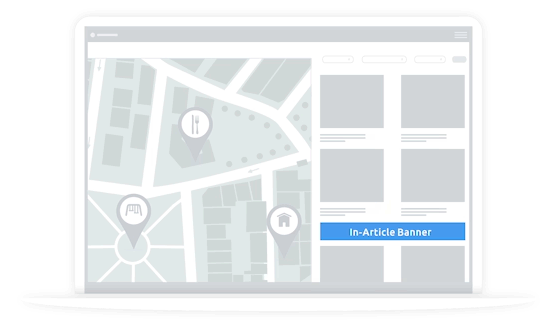
- Analyze User Behavior: Dive deep into user behavior analytics to understand how visitors interact with your site. Use tools like GA4 and even advanced offerings like heat maps to not only track metrics but also get a glimpse into where users are scrolling and engaging with content. This data can be gold for effective ad placement.
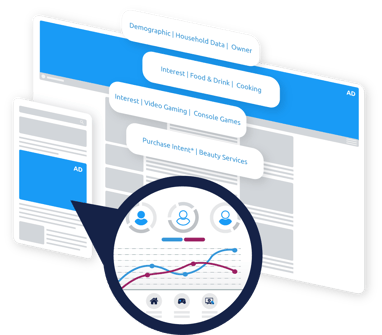
- Viewability Basics: Ad viewability is a key metric to follow. Ads need to be viewed to be effective. For example, display ads should be at least 50% visible for one second and video ads for two seconds. Place ads where users are most likely to spend time using that heat map tool we touched on earlier.
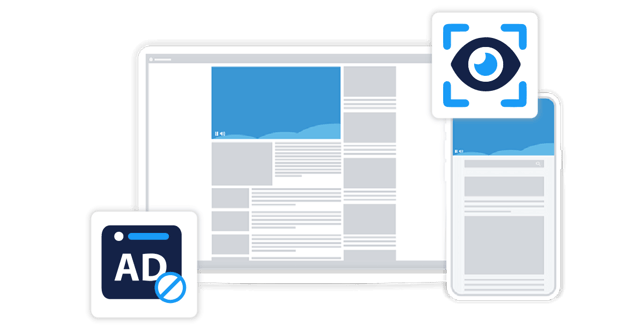
Advanced Strategies for Monetization

What does the future of SEO and ad revenue look like? Not only is the online advertising space changing virtually daily, but new technologies are emerging to help publishers and creators make the most out of their content without taking up too much of their time.
Take smart ad unit implementation. Here, AI, machine learning, and other analytic tools dynamically tailor ad units based on user behavior, page content, and device type. This is something Playwire is leading the charge on. Here’s how it might work:
- You, the publisher or content creator, will enable dynamic ad layouts and units on your site.
- The AI system will decide which ad formats and placements work best based on a user’s past interactions and current behavior to maximize engagement.
- You then sit back, focus on crafting quality content, and watch the revenue flow in.
Of course, the latest and greatest in ad tech can only get you so far. You’ll still need to refine strategies and experiment.
The ultimate goal is to create a seamless blend between the user experience, SEO, and revenue generation. This might mean sacrificing some ad space for better user engagement or tweaking ad formats to ensure faster page loading times. Remember, a positive user experience often leads to higher engagement, which can translate into more valuable ad interactions.
Mastering SEO and Ads with Playwire
-2-1.png)
Ad revenue and website SEO are in a complex dance. When one partner is off rhythm, and they step over each other, it can lead to some significant consequences.
Dissatisfied users and poor engagement? That’s the result of pushing ads a little too much. Plenty of engagement and little to no revenue? You’ve got the SEO chops but none of the ad monetization magic.
It’s all about finding that perfect balance, the symphony that gets those dancers to move in step. Master this complex act, and you’re on your way to happy users and optimized revenue. Of course, no dance master is fully prepared without the right experience and tools. That’s where Playwire comes in.
We’re your go-to monetization partner. With tools like our RAMP Platform on your side and 16+ years of expertise supporting you, your content won’t just shine like a star, it will move your business forward into financial bliss.
Get in touch with the team today to learn how Playwire can help you propel your content and optimize your ad revenue.
Related Content
Feel free to visit our SEO and Ad Revenue Resource Center, or dive deeper into any of these related articles:
- An Introduction to the Interplay Between SEO and Ad Revenue Generation
- Why Content Creators Need to Prioritize SEO Before Turning Their Attention Toward Monetization
- The Interplay Between SEO, Page Speed, and Ad Revenue
- A Guide to Increasing Website Traffic
- 10 SEO Tips to Increase Blog Traffic
- The Ultimate SEO Best Practices Checklist
- The 8 Best SEO Tools
- Understanding the Impact of Keyword Rankings and the Best Strategies for Improving Your Search Ranking
Amplify
Your Ad Revenue
Reach the right audience at the right time and drive CTR, VTR and engagement rates that you won't find anywhere else.